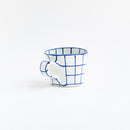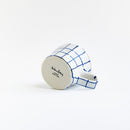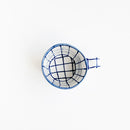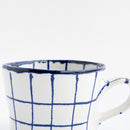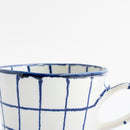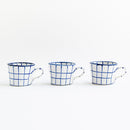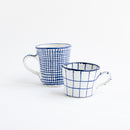
[About the product]
Marianne Hallberg×Seto ware
Marianne HallbergAfter six years of trial and error, the five major works have finally been released simultaneously in collaboration with Seto ware! Her original works are attractive for their hand-drawn lines and their slender, slightly distorted molding and thinness. However, it was also true that because it was handmade, we were unable to make many at once, and we were unable to deliver it widely to everyone. So this time, Tonkachi and Marianne were exploring the mass production of the original, and discovered a kiln in Seto ware, Aichi Prefecture, which has been around since the Taisho period. This is the Seto ware version of Marianne's masterpiece "Checked Cup." Her popular works have become easier to deliver to you, even at your own convenience. The bottom part is engraved with "Tonkachi / Made in Japan."
[About Marianne's Seto-yaki collaboration]
Under the supervision of Marianne herself, this product was completed by reviewing the manufacturing process from scratch along with Seto Yaki Kobo, Japan, in order to provide affordable prices and durability while retaining the quality of her originality. The kiln that will become our ideal partners with Tonkachi and Marianne is one of the most representative kilns of Seto ware, which has been around since the Taisho period.


[About design]
Her unique blue is said to be Marianne Blue. The blue blemish and the texture of the ceramics are delicately reproduced in Seto ware, making it a perfect product that can only be achieved through traditional Japanese techniques. The original "Check Cup" is approximately 3mm thick, while this Seto ware version is approximately 4mm thick. The slight thickness adds about 40g of weight, making it even more durable. Its compactness and the moderate weight when held in your hand make it comfortable to use every day. Just like the original, it is 180ml, slightly smaller than a regular mug.
[Comments from staff]
Marianne's favorite checkered pattern is also loved by Marianne fans. This Seto ware collaboration has now featured this product lineup and has been incorporated into a variety of utensils and ceramics. As it has become exported to many overseas countries, it is widely known as a representative traditional craft that brings out the appeal of "made in Japan" to the world.









